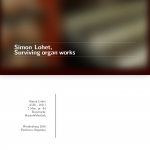
Simon Lohet, Surviving organ works
Simon Lohet (Loxhay) (c. 1550 – 1611) was a Flemish composer, possibly born in Maastricht. All of Lohet’s known works are contained in Johann…
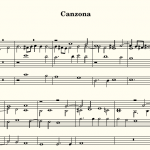
Simon Lohet, Canzona
The Canzona by Lohet is really a fugue in much the same style as most of his 20 fugues. Perhaps it is callec canzona, because of it's sing-like…
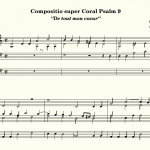
Simon Lohet, Compositio super coral Psalm 9
Lohet's composition on the melody of psalm 9 is a nice example of dense renaissance contrapuntal writing. Each stanza of the choral gets a fugual…
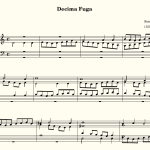
Simon Lohet, Decima Fuga
The tenth fugue by Lohet is a lively piece. It's not exactly a mono thematic fugue, as there are four different segments discernable. Actually quite…
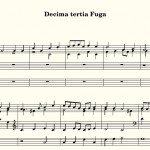
Simon Lohet, Decima tertia Fuga
The thirteenth fugue by Lohet is more dance like than the preceeding fugue with its long lines. I think it is better suited to use the pedal with…
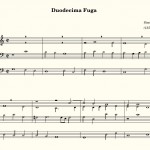
Simon Lohet, Duodecima Fuga
The twelfth fugue by Lohet is a slow flowing piece. It's very reminisence of a Kyrie by da Palestrina: long lines intertwine gracefully with each…
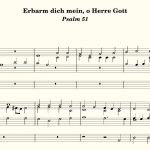
Simon Lohet, Erbarm dich mein, Herre Gott
Lohet's composition on the melody of psalm 51 sounds to me like it was originally written for voices. It's a more simple composition than his…
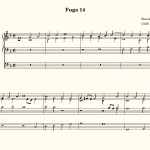
Simon Lohet, Fuga 14
The fourteenth fugue of Lohet is again a calm flowing piece. It makes extensive use of syncopation, which makes a nice 'wobly' effect in the flow of…
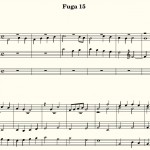
Simon Lohet, Fuga 15
In his fiftheenth fugue Lohet experiments with inversion. After the first statement of the first theme, it is immediately answered by its inversion.…
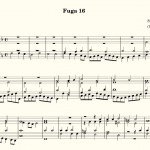
Simon Lohet, Fuga 16
The sixteenth fugue of Lohet has no less then three different themes. But they all do not get more than one exposition and then the fugue is over.…
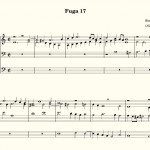
Simon Lohet, Fuga 17
The 17th fugue of Lohet is a mono thematic fugue and an intricate one. In it Lohet explores the different ways in which the theme and its inversion…
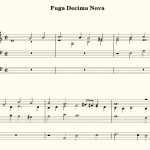
Simon Lohet, Fuga Decima Nova
The 19th fugue of Lohet is again a mono thematic fugue. There is hardly a measure where the theme is not present in one of the voices. In atmosphere…
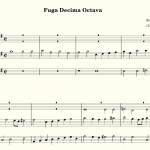
Simon Lohet, Fuga Decima Octava
Of course I had to try Lohet on my new sample set as well. Lohet's eighteenth fugue is again some dense contrapuntal writing. The first part of the…
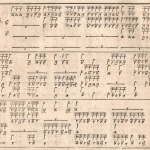
Simon Lohet, Fuga Prima
Simon Lohet (Loxhay) (c. 1550 – 1611) was a Flemish composer, possibly born in Maastricht. During his live he was mostly active in Germany. He was…
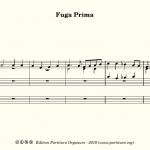
Simon Lohet, Fuga Prima (version Lynar B3)
Simon Lohet (Loxhay) (c. 1550 – 1611) was a Flemish composer, possibly born in Maastricht. During his live he was mostly active in Germany. He was…
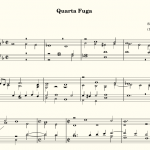
Simon Lohet, Fuga Quarta
The fourth fugue of Simon Lohet offers a few surprises. At least to me. Firstly, parallel fifths and parallel octaves apparently weren't as…
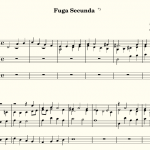
Simon Lohet, Fuga Secunda
The second fugue of Lohet from Johann Woltz’s Nova musices organicae tabulatura (Basel, 1617). The harmonic progression in this second fugue…
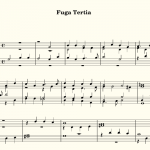
Simon Lohet, Fuga Tertia
The third fugue of Lohet from Johann Woltz’s Nova musices organicae tabulatura (Basel, 1617). The recording was done with the sampleset, made…
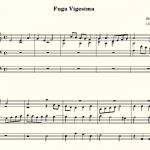
Simon Lohet, Fuga Vigesima
Almost two months have passed since I posted Lohet's 19th fugue. So it's about time to publish the 20th and last fugue. It consists of two sections,…
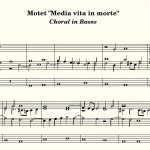
Simon Lohet, Motet media vita in morte
Lohet's transcription of the motet "Media vita in morte" has the main melody in whole notes in the bass voice. The recording was done on the…
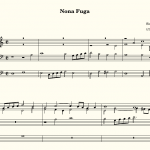
Simon Lohet, Nona Fuga
Lohet's Nona fuga has a far more subdued character than most of the preceeding fugues. I think it can best be played with use of the pedals. But I…
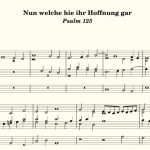
Simon Lohet, Nun welche hie Ihr Hoffnung gar (Psalm 125)
The last piece of Lohet there is for me to publish is a four voice treatment of Psalm 125. It's not based on the melody of Psalm 125 as we know it.…
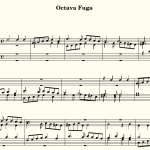
Simon Lohet, Octava Fuga
Another dance-like fugue of Lohet. Apart from some unusual (to our 'modern' ears) harmonic progressions, this piece could have been written a 100…
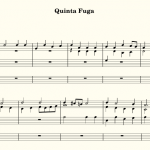
Simon Lohet, Quinta Fuga
Lohet's Quinta Fuga (I follow the designation in the original Edition, instead of naming it Fuga Quinta) shows its Renaissance roots more than the…
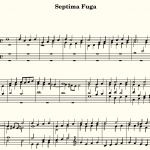
Simon Lohet, Septima Fuga
Lohet's Septima Fuga is actually two small fugues in one piece. Two different (but related) themes each get an exposition and then the fugue is over.…
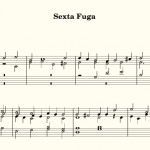
Simon Lohet, Sexta Fuga
Lohet's sixth fugue, though short, uses contrapuntal devices as stretto and diminution and combines them as well. In that respect it is more modern…
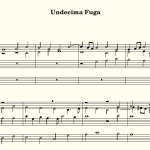
Simon Lohet, Undecima Fuga
Playing the eleventh fugue of Lohet one wonders wether Bach knew the fugues of Lohet. The theme of the fugue BWV 878 is the same as the theme of…
Visits: 1680
